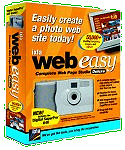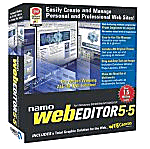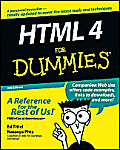Your Own Photo Web Site
by Vivid Light Staff
How would you like to be able to create a
Web site where you could showcase your photos to friends, family and the
whole world? Today it's far easier than you might think.
A Little History to Help
Understand the Present Not so long ago building a Web site required
knowledge of the Internet, of computers and the ability to program in HTML
- the common programming language of the Web. To the uninitiated it was
all Greek. To the programmers of the time it was cake. HTML or hyper-text
markup language was designed to be laughably simple by programmer's
standards. But it was also an incredibly powerful tool for building
screens, which is after all what the Web consists of. To see what HTML
looks like click on the View
menu of this window and choose Source.
This will open a window that allows you to look directly at the HTML
source that was used to build this page.
But as companies looked to the Web as a way to get information out
large numbers of similar screens needed to be built. Initially programmers
built their own tools to build very specific pages but eventually tools
produced to create Web pages and eventually complete Web sites
automatically. Or at least that's what the software companies claimed.
Those early tools generated code with plenty of flaws. They could do the
bulk of the grunt work but someone had to go back in and fix up all the
problems. But Web sites got more complicated and the tools got better at
handling them. So that today small sites can be reliably built using
simple tools and even large sites need far less fiddling directly with the
code.
But code generators aren't the cure for everything. Some sites that
have special controls, such as the forward and backward controls in Vivid
Light, require special code generators. In our case the pages are
generated by our own code generator, then brought in Microsoft FrontPage,
where they are then integrated into the overall site and managed by
FrontPage. Do you really need software to manage your Web site? In our
case yes, Vivid Light Photography consists of over 3,300 files in 266
subdirectories. So anything we can do to automate the process is a plus.
But the sites of most photographers will be far smaller and require far
simpler tools.
Starting on Your Own Site
For the sake of this article we'll assume that:
- You'll be building a small site containing no more than a few
hundred files max.
- The purpose of the site will be to display your images and maybe say
a little bit about you.
- It will contain links to other Web sites (including Vivid Light -
hint, hint).
- You may at some point want to sell prints through your site
We'll also assume that:
- You aren't a programmer or computer systems person.
- You don't want to become either.
- You want a simple way to get a Web site up that won't require much
effort or maintenance on your part.
- You have an Internet service provider (ISP) who can provide you with
space on their Web server. This is where you Web pages will live.
Getting Started
By now you should be getting the idea that this doesn't require a pocket
protector and a degree in computer science. Below are several simple
approaches and simple tools for getting something out there. But first you
need to get some information from your Internet Service Provider (ISP) to
determine that you have a place out on the Web to put your Web page.
It's very common today for a "personal Web page" to be
included when you get an Internet account. You may have one and not even
know it. So before you get started contact your ISP and find out what
you'll need to put your Web page up. They'll provide you with something
called an IP address. This is the numeric address of their server where
you new Web page will be located. It's kind of like the lot and block
number of your house on the tax map. They'll also give you the URL which
is the address people will type in to find your Web site. Ours is http://www.vividlight.com.
Yours will probably be something like http://users.yourISP.com/~your_email_name.
So if you're using a company called StarNet to connect to the Internet
(we're making that up in case there really is a StarNet) and your email
address is BobSmith@starnet.com, your Web
site will probably have an address like http://users.starnet.com/~bobsmith.
Well that's a mouthful. What if you want something catchy like www.greatphotographer.com?
To get the Web address of your choice you'd go to a Web registrar and pay
a fee to register, or in effect own, that name. If you're interested you
can read about the process in the sidebar
below. For now lets say you're going to use the page you get free from
your ISP. If you don't get a Web page as part of the package from your ISP
you have two choices: switch to another ISP or go to a free Web hosting
service. There are many, the level of service varies, and most will pop
ads up over your page every time someone comes to visit.
Build it and They Will Come - Some Building Tools
Now that you have a place to park you Web site it's time to look at
how to build it. For photographers the easiest solution for showcasing
your work is to use one of the templates that are built into PhotoShop. We
explained how to use them to create a web page in When
Digital is Wonderful in Issue #25.
The upside is that all you need to do is park copies of your images in
a subdirectory, pick items from a couple of menus and you've got a
complete Web site ready to upload to your address on the Web. The whole
process is painless and literally takes less than 10 minutes. The
uploading process will vary a bit from ISP to ISP so we'll leave that part
alone for now. The upside to this approach is that it's incredibly easy.
The downside is that you're pretty limited as to what you can do with your
Web site. The only thing you can create this way are image galleries. The
next step up the ladder is a simple Web creation tool. This software is
inexpensive, easy to learn and easy to use.
 One
example of such a package is WebEasy Home Edition. It retails for
about $29.99 so it's easy on the wallet and it will allow you to build
simple Web pages and Web sites. The keyword here is simple. The software
provides you with a set of simple templates and allows you to make simple
changes to the text and colors of those templates - but you're limited in
just how creative you can get. This is both the strength and weakness of a
package like WebEasy. Because it imposes strict limits you can't get into
trouble. But because of those strict limits you can only get so creative.
WebEasy Home Edition also won't let you do things like add credit card
processing to sell things through your Web site. One
example of such a package is WebEasy Home Edition. It retails for
about $29.99 so it's easy on the wallet and it will allow you to build
simple Web pages and Web sites. The keyword here is simple. The software
provides you with a set of simple templates and allows you to make simple
changes to the text and colors of those templates - but you're limited in
just how creative you can get. This is both the strength and weakness of a
package like WebEasy. Because it imposes strict limits you can't get into
trouble. But because of those strict limits you can only get so creative.
WebEasy Home Edition also won't let you do things like add credit card
processing to sell things through your Web site.
For that they have WebEasy Professional. It has over 100
templates and built in support for e-commerce, which is selling things
through the Web. They'll even hook you up with a payment processing
service to handle your credit card transactions (though we're sure there's
a healthy fee). At a cost of $69.99 the professional version will give you
a lot more latitude towards creating a professional looking Web site.
WebEasy isn't the only company making low cost Web publishing software,
but they seem to have a following and we found their software in several
retail outlets. This is a good sign because it means they're likely to be
around to support you and their product a year from now. You can also
search the Web for free software called shareware but we wouldn't
recommend it. Shareware often has quirks and bugs, the documentation is
often less than stellar, and you are more likely to be left frustrated
unless you already have the knowledge to work your way out of a problem.
 The
next step up the Web site creation ladder are products like WebEditor
5.5. This package contains over 200 templates which the WebEditor
folks call themes. They also have ecommerce support but more importantly
WebEditor allows you to get to the underlying HTML code and modify it
directly. The
next step up the Web site creation ladder are products like WebEditor
5.5. This package contains over 200 templates which the WebEditor
folks call themes. They also have ecommerce support but more importantly
WebEditor allows you to get to the underlying HTML code and modify it
directly.
Why would you want to do that? While all of these products are good at
taking a lot of the drudgery out of creating Web pages none of them are
perfect. Often what is a tedious series of drag and drop and going through
layer upon layer of dialog boxes can be done with a little quick typing
directly into the code itself. If you already know HTML you'll never want
to be without this ability and if you decide to build a more complex Web
site you'll need it. WebEditor also provides support for adding
multi-media files to you Web site. Multi-media files include sound, video,
and Flash sequences.
 A
lot of Web pages are built with Microsoft FrontPage because a lot
of people got their copies for free. How's that you ask? When you buy
Microsoft Office professional edition Microsoft FrontPage is included.
Several other products from Microsoft include a scaled down version of
FrontPage called FrontPage Express (which is on par with something like
WebEasy Home Edition). If you don't have it through any of those software
bundles a copy will set you back about $170. A
lot of Web pages are built with Microsoft FrontPage because a lot
of people got their copies for free. How's that you ask? When you buy
Microsoft Office professional edition Microsoft FrontPage is included.
Several other products from Microsoft include a scaled down version of
FrontPage called FrontPage Express (which is on par with something like
WebEasy Home Edition). If you don't have it through any of those software
bundles a copy will set you back about $170.
The full version of FrontPage is quirky (sometimes very quirky) but
it's able to manage large Web sites. It does require that certain software
called Microsoft FrontPage Extensions be loaded onto the server. So check
with your ISP before choosing FrontPage as your development tool.
That's actually not bad advice in any case. If you are thinking about
putting together a complex site that uses forms and take credit cards you
should check with your ISP to make sure that you can use a particular
package before you buy it.
If you want to set up an ecommerce site using FrontPage you have to buy
a separate package from Microsoft called StoreFront which retails
for a whopping $250 in addition to the cost of FrontPage.
 The
big dog on the block is a package called DreamWeaver MX ($400).
Don't even consider this software unless you already know quite a bit
about creating a Web site and you're planning on building a pretty large
complex site. DreamWeaver is powerful and wasn't designed with novices in
mind. The learning curve is steep and the documentation assumes you know
what you're doing. The
big dog on the block is a package called DreamWeaver MX ($400).
Don't even consider this software unless you already know quite a bit
about creating a Web site and you're planning on building a pretty large
complex site. DreamWeaver is powerful and wasn't designed with novices in
mind. The learning curve is steep and the documentation assumes you know
what you're doing.
Still Not Sure
Don't let yourself get overwhelmed. If you have a page from your ISP
try the simple approach using PhotoShop of WebEasy Home Edition first. Get
your feet wet and learn your way around. According to our reader polls
there's a pretty good chance you already own Photoshop and at $30 WebEasy
is an inexpensive way to dip a toe in the water.
But be forewarned! This stuff is addictive in its own right. You can
wind up spending a ton of hours in front of the computer that would be
better spent out shooting!
| So
You Want to be a Programmer
If you've decided that you want to know a more about the HTML
code that makes up your Web pages and you want to know something
about how it works check out the NCSA
Beginner's Guide to HTML. It's available online and contains a
ton of information.
 For
a less intense approach try HTML 4 for Dummies by Ed Tittel and
Natanya Pitts. Most programming books assume that you're a
programmer so they're set up as references more than anything
else. For
a less intense approach try HTML 4 for Dummies by Ed Tittel and
Natanya Pitts. Most programming books assume that you're a
programmer so they're set up as references more than anything
else.
The tone of this book is more like sitting down with someone and
having them explain things to you in simple plain English. You can
find this book in book stores for under $20. If you're thinking
about learning HTML it will be money well spent. |
| Photographer
or Pornographer
There is an urban legend about a grandmother who was said to have
been prosecuted for child pornography because she took pictures of
her granddaughter in the bathtub.
That story may or may not be true, but if you have any nude
figure studies among the images you plan to post on your Web site or
among the prints you intend to sell you should make absolutely sure
that you have a signed model release that includes some kind of
proof of age for the model. A driver's license, preferably a photo
license is best for ID. Otherwise you can leave yourself open to an
accusation that you are trafficking in images of minors. We get
signed model releases for every model we use and no model is
photographed unless we have a copy of a photo ID attached to the
model release. Age can be difficult to judge in a photograph so the
rule around here is "if they're under 100 get proof of age."
As for shots of your child in the bathtub or running around naked
on the beach - I would think twice before putting them on the Web.
The federal government is conducting a huge online crackdown on
child pornography on the Web - and that is a good thing.
But just in case that old urban legend about grandma is true I
wouldn't put myself at risk. Save those nude photos for embarrassing
your kids when they're teenagers. What else are parents for! |
| Your
Own Web Address
So you want www.GreatPhotographer.com
for your own (actually it's already taken by a phtographer in
Iowa).
The way you go about getting it is to go to an online registrar
such as Internic (http://www.internic.com).
You pay a fee to register the address and it becomes yours. Once a
year you'll get a renewal notice and you get to pay again.
But nothing on the Web is quite that easy. Today there are dozens
of registrars for the Web and they all have different rates. You can
get a complete list sorted by country from Internic by clicking
here.
But the fun doesn't stop there. With over a billion people on the
Web worldwide and an unknown number of Web pages out there it can be
difficult to find a name that isn't already taken. So make a long
list of site names you like and then go to a search page like this
one from Network
Solutions to find out if it's available.
If you really have to have a name and its already taken you can
go to the Whois
Registry. This is a database of who owns every address on the
Internet. Type in the name of the site you want and you'll get
information on who owns it and how to contact them. Then it's up to
you to get them to part with it. |
 Subscribe to
Vivid Light
Subscribe to
Vivid Light
Photography by email
Tell
Us What You Think
|
